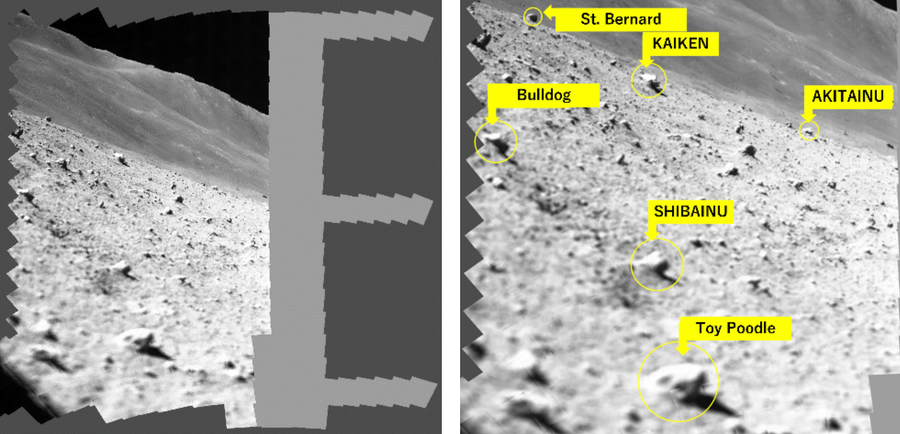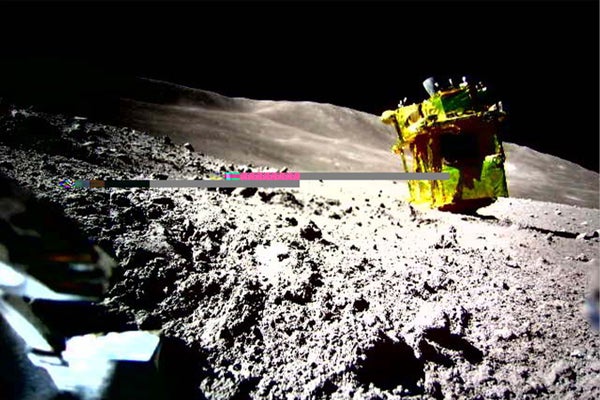January 30, 2024
3 min read
After a nine-day shutdown, the upside-down lunar lander received enough sunlight to power up again
The lander was photographed upside down on the lunar surface.
After being stuck without power for more than a week, Japan’s Moon lander has woken up and started snapping images of the lunar surface.
On 28 January, the Japan Aerospace Exploration Agency (JAXA) re-established contact with the Smart Lander for Investigating Moon (SLIM), which touched down on the slope of a crater near the Moon’s equator on 20 January. “Communication with SLIM was successfully established last night, and operations resumed,” JAXA announced in a post on X (formerly Twitter).
SLIM landed on the Moon’s surface roughly 55 metres away from its original target, making it the most precise landing ever accomplished. Days later, NASA’s Lunar Reconnaissance Orbiter spotted the lander on the Moon from 80 kilometres above.
On supporting science journalism
If you’re enjoying this article, consider supporting our award-winning journalism by subscribing. By purchasing a subscription you are helping to ensure the future of impactful stories about the discoveries and ideas shaping our world today.
But the landing wasn’t entirely smooth sailing, with one of the probe’s two engines probably losing thrust at just 50 metres above the surface, Jonathan McDowell, an astrophysicist at the Harvard–Smithsonian Center for Astrophysics in Cambridge, Massachusetts, says. “It started going sideways because the two engines were unbalanced.”
In an image captured by a robot that SLIM managed to deploy during its descent — a baseball-sized robot with two cameras — the lander could be seen tipped upside down. Its solar cells were also pointing away from the Sun, which meant that they couldn’t generate enough power to run SLIM’s instruments and communications equipment. The lop-sided lander was forced to run on battery power for almost three hours. When the lander’s battery reached 12%, JAXA shut off SLIM’s power to increase its chances of recharging when the Sun moved into a more favourable position.

The lander’s charge-up was probably because of the sunlight changing direction and beaming onto the lander’s solar cells, enabling them to start generating…
Click Here to Read the Full Original Article at Scientific American Content: Global…

